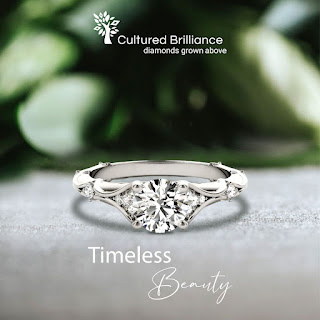The Different Types Of Lab-Grown Diamonds You Need To Know About
The lab-grown diamond industry has taken the world by storm since its very inception. From high-end dealers to small retailer chains, lab-created diamonds are everywhere.
The majority of people today, prefer these diamonds due to their constant availability around the clock. Since lab-grown diamonds are created in an enclosed lab, they do not need a specific environment to grow. Moreover, every lab has the resources to create Type II A diamonds; one of the most prestigious diamonds known to mankind. Kohinoor, Cullinan & Lesedi La Rona are some of the examples of the finest Type II A natural diamonds that have ever existed.
With the number of natural diamonds available in the market, it was only wise to create an equally wider range of lab-created diamonds. Even though the makers of lab-grown diamonds haven’t been able to replicate all the varieties of natural diamonds, they have successfully created alternatives for a few.
If you are looking for the perfect lab-grown engagement ring, here are the two types of lab diamonds you can choose from:
1. Simulant Diamonds
Simulant diamonds are one of the closest alternatives to a natural diamond. Created back in the Victorian era, these diamonds are closely identified with natural diamonds but their physical and chemical properties are slightly different. Cut glass, zircon, and sapphires are among the most common materials used to create these diamonds.
- Diamond Nexus Simulant:
One of the most widely used sub-types of Simultant diamonds is diamond nexus simulant. Made with a mixture of carbon and other additional ingredients, these diamonds offer a triple lifetime guarantee due to their extremely high durability. Diamond nexus simulant is a preferable choice if you are looking for a lab-grown diamond engagement ring that is not only unique but extremely durable.
- Cubic Zirconia Simulant:
One of the lowest priced diamonds, cubic zirconia simulant comes from zirconium dioxide. This is a great natural diamond alternative but is one of the least durable lab-grown diamonds that has ever been created.
- Moissanite:
Moissanite is more of a gemstone than a diamond, created under the same conditions as any other lab diamond would. They are synthesized from silicon carbide which makes moissanite one of the strongest simulant diamonds available today.
2. Cultured Diamonds
Cultured diamonds are mostly created from scratch under the same conditions that a mined diamond would undergo. Since the creation of these diamonds demands a similar environment, their physical and chemical properties are strikingly similar to natural diamonds. Jewelers in Marietta are known for their cultured diamonds given the quality and finesse they offer.
Cultured diamonds are further divided into the two following categories:
- HPHT Diamonds:
High-pressure high-temperature diamonds are created in the same environment as natural diamonds. To create these diamonds three main press designs are used to supply the pressures and temperatures. These press designs are the cubic press, the split-sphere press, and the belt press.
- CVD Diamonds:
The chemical vapor deposition process involves growing diamonds from a combination of hydrocarbon gases. This approach is thought to be the best option due to its versatility and ease of use in industrial settings. This is the reason it is becoming more and more common in laboratory research. The favored method for producing diamond crystals in large quantities is still HPHT. The ability to grow over many substrates and enormous areas is provided by CVD diamond growth. Additionally, it enhances control over chemical contaminants.
Lab-grown diamonds are ideally divided into two subcategories, each having its own perks. You can have your engagement ring designed with whichever type suits you the best.
The majority of jewelers today deal in lab-grown diamonds, and Cultured Brilliance is a flagbearer for the finest quality diamonds. Their collection has an abundance of lab-created diamond jewelry that you can joy without burning a hole in your pocket.


Comments
Post a Comment